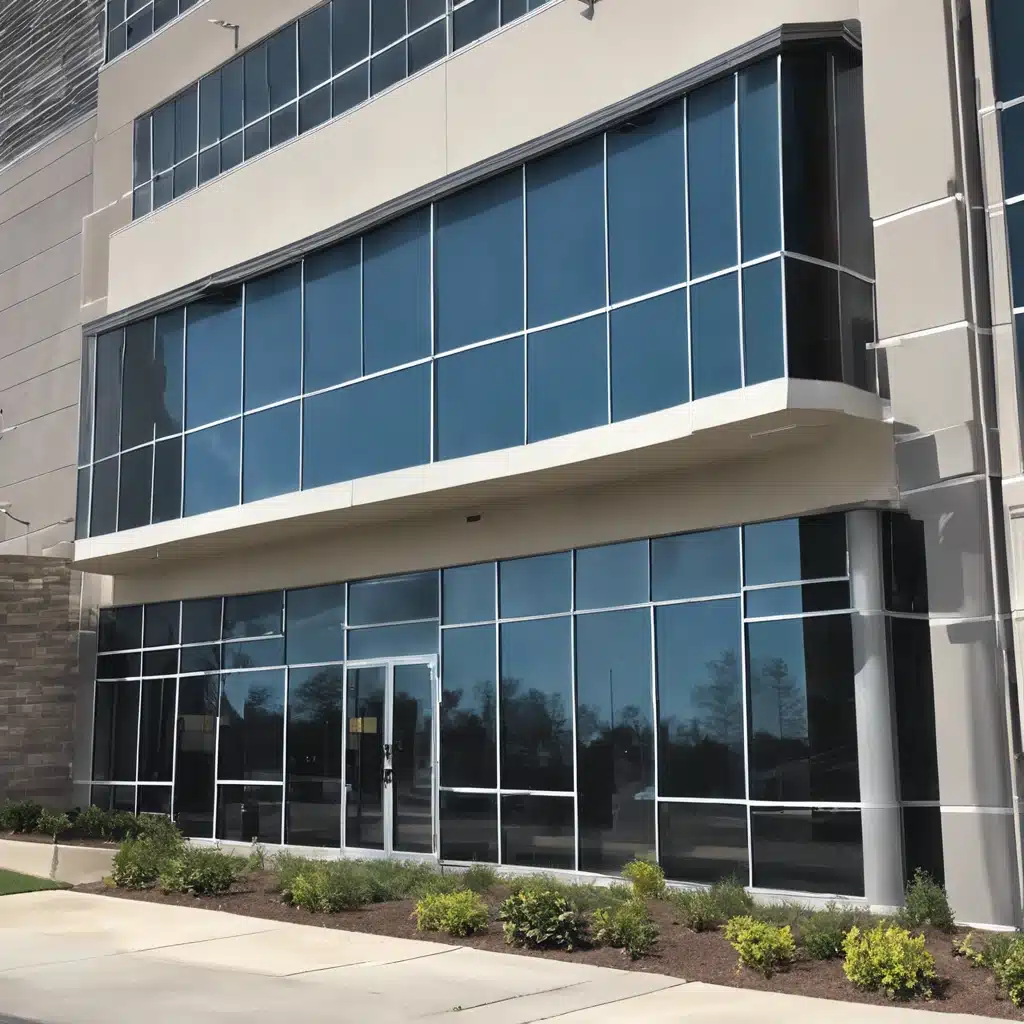Architectural Window Film: UV Protection Benefits for Your Home and Office
Architectural Window Film: UV Protection Benefits for Your Home and Office

If you think about it, our windows are like the eyes of our homes and offices—allowing light and warmth in but also letting harmful rays sneak past unnoticed. Did you know that UV rays can not only damage your skin but can also fade your favorite furniture and artwork? This is where architectural window films come in. These smart films act as a protective barrier, blocking nearly all of those harmful ultraviolet rays while still letting natural light brighten your space. In this article, we’ll explore how these films work to keep your interiors safe, stylish, and comfortable without compromising on that sunny ambiance we all love. Whether you’re looking to safeguard your personal sanctuary or create an inviting workspace, architectural window film might just be the upgrade you didn’t know you needed!
Architectural window film provides significant UV protection by blocking up to 99% of harmful ultraviolet rays, which can prevent skin damage and reduce the risk of skin cancer. Additionally, this protective layer helps safeguard interior furnishings, such as furniture, carpets, and artwork, from fading and discoloration caused by prolonged sun exposure, ultimately enhancing comfort and aesthetic longevity in both residential and commercial spaces.
Incredible UV Protection
Ultraviolet (UV) rays are stealthy adversaries that can damage our interiors and impact our health. Comprised of UVA, UVB, and UVC radiation, these rays have varying wavelengths, yet they all pose risks when it comes to prolonged exposure indoors. Studies indicate that nearly 99% of harmful UV radiation can be absorbed or reflected by architectural window films—this remarkable capability offers substantial protection, paving the way toward a safer indoor environment.
It’s essential to note that approximately 40% of fading in furniture, carpets, and artwork is attributed to UV radiation. By incorporating architectural window films into our homes or offices, we allow natural light to fill our spaces while safeguarding against degradation. Essentially, we’re constructing a barrier against damage without sacrificing the cheerful ambiance brightened by sunlight.
These advanced films utilize specialized polymers and coatings specifically designed for effective UV protection. Not only do they block harmful rays, but they also permit visible light to pass through unobstructed. This means that while we enjoy sunlight’s warmth and glow, we don’t have to worry about the long-term effects on our furnishings; it’s an ingenious combination of functionality and aesthetics.
Picture this: our rooms remain beautifully illuminated, yet our treasures—be it a cherished painting or a plush sofa—retain their vibrancy and color for years longer than they would without such protection.
Furthermore, many customers express satisfaction with how architectural window films improve comfort levels within their spaces. Using these films can lead to a significant decrease in indoor temperatures during sweltering summer months since they reflect solar heat effectively. Some studies suggest that installations can reduce energy costs by 10-30% simply by minimizing heat gain from sunlight. This provides an additional layer of comfort and efficiency—who wouldn’t appreciate lower energy bills along with enhanced living quality?
As we integrate architectural window films into our homes or commercial offices, it’s important to understand that the safety they provide is backed by concrete statistics and user experiences. Homeowners who apply these protective films often report enhancements in both aesthetic qualities and functional advantages. They notice less fading in textiles and less strain on air conditioning units—all positive outcomes flowing from a simple upgrade.
With such tangible benefits influencing both comfort and aesthetics, let’s explore how these protective solutions further enhance the overall appeal of interior spaces.
Benefits for Interior Spaces
One of the remarkable aspects of architectural window film is how it transforms our living and working environments into more comfortable spaces. For many of us, managing temperature and light within our homes and offices is a constant task, especially during peak summer months when the sun’s rays can be relentless. By blocking up to 99% of harmful UV rays, window films not only safeguard our furnishings but also provide significant energy savings, preventing our air conditioning systems from working overtime.
In fact, studies have shown that installations of window films can lead to energy savings ranging from 10% to as much as 30% on cooling costs. This means not only are we reducing our environmental footprint by using less energy, but we are also saving money—a win-win scenario for us all. Enhanced insulation keeps interiors cooler in summer while retaining warmth in winter, striking a balance that makes indoor life much more pleasant.
Beyond energy efficiency, there are additional aesthetic and security benefits we should consider.
Moreover, architectural window film enhances privacy without sacrificing natural light, an essential component for modern design concepts. Whether in a bustling office or a cozy home environment, we all appreciate the need for personal space. These films can obscure outside visibility while still allowing sunlight to permeate our interiors. That way, we get to enjoy sunny days without glaring sunlight adversely affecting our comfort or sense of security.
We recall a recent project where a client wanted to revamp their home office. After installing clear privacy film, they reported feeling significantly more focused and relaxed knowing that outside distractions were minimized. The natural light flooded their workspace without the fear of prying eyes, making for a peaceful ambiance perfect for productivity.
Additionally, these practical effects enhance not only how we live but also how we experience everyday activities within our own spaces.
The functional and aesthetic enhancements offered by architectural window film are transformative. Our interior spaces become havens of comfort and peace—an environment conducive to relaxation or productivity—while also providing that vital layer of protection against the sun’s harmful rays.
As we consider these significant advantages, it’s important to explore other ways to elevate the comfort and safety in our homes and workplaces.
Improved Comfort and Safety
UV-blocking window films do more than just enhance our indoor comfort; they also fortify the safety of our spaces. By mitigating solar heat gain, these films help maintain a steady temperature, making our environments not only more pleasant but also safer. For example, extreme temperature fluctuations can lead to physical discomfort, impacting focus and productivity—especially in commercial settings where workers need to be at their best. When solar heat is kept at bay, we can prevent potential heat-related health issues, creating a more inviting atmosphere for everyone.
In addition to regulating temperature, architectural window films reduce glare from sunlight. Glare often leads to eye strain, headaches, and diminished concentration. We’ve all faced the frustration of trying to read a screen while battling excessive brightness. With a reduction of up to 85% in glare thanks to these films, our workspace becomes much more conducive to productivity and comfort. Imagine sitting down at your desk without distressing reflections distracting you from your tasks—that’s what good-quality window film delivers.
But while comfort is paramount, let’s shift our focus to the safety aspect as well.
Safety is a non-negotiable aspect of any interior space. Window films provide an additional layer of protection against breakage by holding shattered glass together in case of accidents or forced entry. If an object strikes the glass or if the glass experiences thermal stress (think drastic weather changes), the fragments remain intact rather than scattering across the room. In residential areas, this keeps children and pets safe from potential harm caused by flying shards.
Moreover, enhancing our privacy with architectural window films allows us to feel secure in both homes and workplaces. While still allowing natural light to stream in, they create a barrier that keeps prying eyes at bay—an important consideration in both residential and commercial spaces. This balance between openness and security enhances our overall sense of well-being, allowing us to enjoy our environments more fully without feeling exposed.
As we continue exploring the benefits of architectural window films, let’s examine how they can significantly improve visual clarity while minimizing distractions.
Glare Reduction
Excessive glare isn’t just a nuisance; it can significantly impact our daily lives and even our well-being. Imagine sitting at your desk, attempting to focus on a task while the sun’s rays reflect off your computer screen, causing squinting and strain. It’s akin to trying to read a book with a flashlight glaring in your eyes—unpleasant and highly distracting. This discomfort can lead to headaches and reduced productivity, particularly in work environments that rely heavily on screens.
Fortunately, architectural window films provide an effective solution by filtering specific wavelengths of light. These films diffuse harsh sunlight before it enters our spaces, allowing for a more evenly lit environment. Studies indicate that glare reduction can enhance workplace productivity by 10-20%, as employees experience less eye strain and fatigue. This is particularly crucial for graphic designers, artists, or anyone who spends long hours in front of screens where visual clarity is paramount.
Take one of our clients—a graphic designer who constantly battled migraines due to excessive glare. After installing our UV-protective window films, they noted a remarkable decline in their headache occurrences. Their workspace transformed into a comfortable zone where they could focus creatively without the looming threat of distraction from glaring light.
As we explore further, it becomes clear that these films not only improve visual comfort but also contribute significantly to energy savings. By reflecting excess solar heat and reducing dependence on artificial lighting, architectural window films present an all-around win for both comfort and cost-efficiency.
Increased Energy Savings
Architectural window films are not just about blocking harmful UV rays; they play a vital role in improving the thermal performance of our windows. By reducing solar heat gain, these films help maintain a more stable indoor temperature. This means that during those hot summer months, when the sun blazes through your windows, air conditioning systems don’t have to work as hard to keep spaces cool. The U.S. Department of Energy reports that window films can decrease cooling costs by up to 30%.
Imagine what that translates to on a monthly basis—substantial savings!
What’s particularly fascinating is how window films work to limit the amount of solar heat entering a building by reflecting and absorbing sunlight. This means that rather than letting heat seep indoors, buildings can stay cooler, significantly reducing strain on HVAC systems. With less demand on air conditioning, savings accumulate and the life of HVAC equipment is extended.
Let’s consider an example: In one case study involving a medium-sized office building, the installation of architectural window film led to a remarkable reduction in monthly energy bills—dropping by $150 after the film was applied. Similar results have been reported across various properties since energy savings are a common benefit associated with proper window film installation.
This demonstrates how investing in high-quality window films is an effective way for us to enhance both comfort and financial efficiency.
Moreover, we should be aware that the long-term benefits extend beyond immediate cost savings. Studies indicate that as awareness grows about energy efficiency and health benefits—illustrated by a projected market growth rate of 6.3% from 2024 to 2030—many consumers are becoming increasingly conscious about their choices regarding architectural window films. It stands as a wise decision to equip homes and offices with such films not just for aesthetic reasons but for enhanced sustainability too.
As we explore the advantages of installation, it becomes important to consider how user-friendly these solutions can be while also ensuring they remain effective over time.
Easy Installation and Maintenance
One of the most appealing aspects of architectural window films is how simple they are to install. We all appreciate a good DIY project, and with just a few essential tools, we can make our spaces more comfortable and energy-efficient.
To start, it’s crucial to clean the window surface thoroughly. Imagine looking forward to enjoying your newly tinted windows, only to find dust and grime sticking out like sore thumbs. Therefore, washing the surface with a mild soap solution ensures that the film adheres properly without any hindrances.
Once we’ve achieved a clean canvas, it’s time to move on to applying the film.
When it comes to application, using soapy water creates a slippery layer between the glass and film, making alignment much easier. We simply take the window film, position it over our clean window, and start applying it while gently sliding it into place. If we’ve done our part in keeping things tidy, avoiding wrinkles becomes almost second nature. Next, we grab a squeegee—that trusty tool that helps us push out any air bubbles while ensuring a firm bond forms between the film and glass surface.
- Squeegeeing helps eliminate trapped air bubbles.
- The gentle pressure allows for seamless adhesion.
- It’s essential for achieving that crystal-clear finish we desire.
After we’ve squeegeed out those pesky air pockets, we’ll want to trim any excess film for a neat finish. Picture this: your windows glowing beautifully from the outside while showcasing pristine conditions inside. Taking care of small details like trimming away unnecessary edges not only enhances aesthetic appeal but also prevents potential peeling or lifting of the film over time.
Most people are surprised to hear that the entire installation process for a standard window takes less than an hour. That’s right! In just about 60 minutes or less, we can elevate our home or office space significantly.
But what happens after installation? That’s where maintenance comes in, and thankfully it’s just as easy. Regular upkeep involves cleaning with non-abrasive solutions periodically to keep the film looking fresh and functioning at its best. Think about how often you wipe down surfaces in your home; maintaining your window film should be equally routine and stress-free. A mild soap solution and soft cloth will do wonders in preserving both clarity and functionality.
With such an easy installation process and minimal maintenance, it’s time to navigate through the options available for enhancing our living or working environment effectively.
Choosing the Right Film for Your Home
Selecting the appropriate UV-protective film is a crucial step in enhancing our spaces. This involves considering various factors to determine the best fit tailored to our specific needs.
First and foremost, we must think about our desired level of light transmission. Some individuals might prefer a darker tint, while others may want a solution that allows more natural light into their homes. If we have a room filled with plants or artwork, a film that blocks harmful UV rays without significantly reducing brightness is essential for preserving those cherished possessions.
Beyond light transmission, another vital factor is our geographic location and sunlight exposure. Regions with high levels of sunlight may require stronger films that provide superior UV protection. For instance, living in sunny California means we should be particularly vigilant about protecting our interiors from fading and damage caused by the relentless sun.
It’s also crucial to recognize any privacy requirements when selecting window films. If our home faces busy streets or neighbors’ windows, opting for higher-opacity films can create a comfortable sanctuary without sacrificing too much natural light. This balance is vital; we want to feel safe and secure without living in a cave.
Additionally, we should take our home’s architectural style into account. The right film shouldn’t just perform well; it should also complement the aesthetics of our house. A sleek, modern home might call for contemporary films that enhance its clean lines, while an older house may benefit from classic options that blend seamlessly with its traditional look.
At Tint Genius, we pride ourselves on offering a variety of films designed to meet diverse preferences—from options designed for maximum insulation to those tailored specifically for style or minimal visual impact. Our professional consultation services are here to guide us toward the film that perfectly fits our unique requirements.
By thoughtfully considering these factors, we can ensure that we make an informed decision that not only protects our space but also elevates its function and appearance over time. For those curious about more information or available services tailored specifically for them, reaching out to Tint Genius can unlock additional insights into the benefits of window film! Call us at 678-609-6005.



